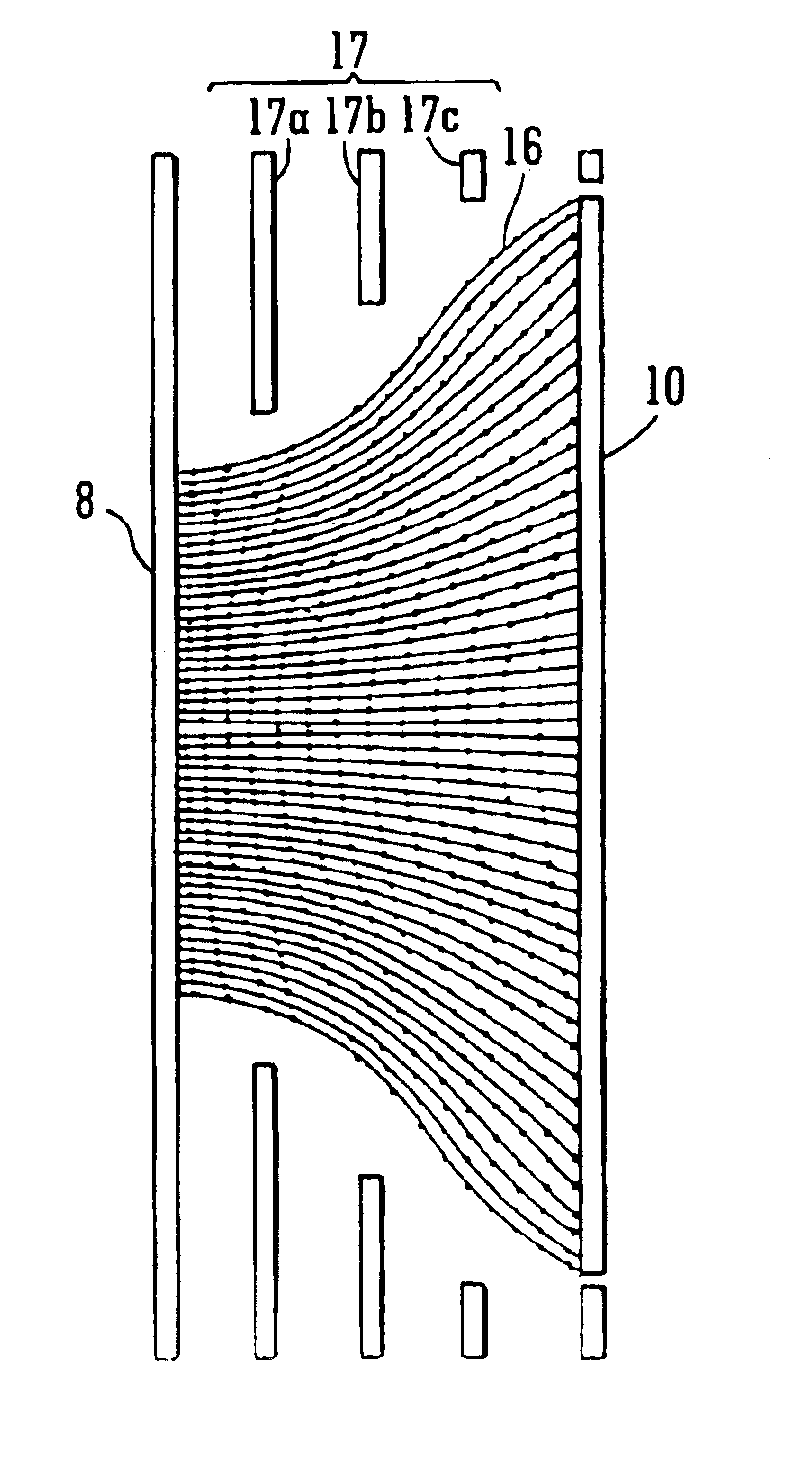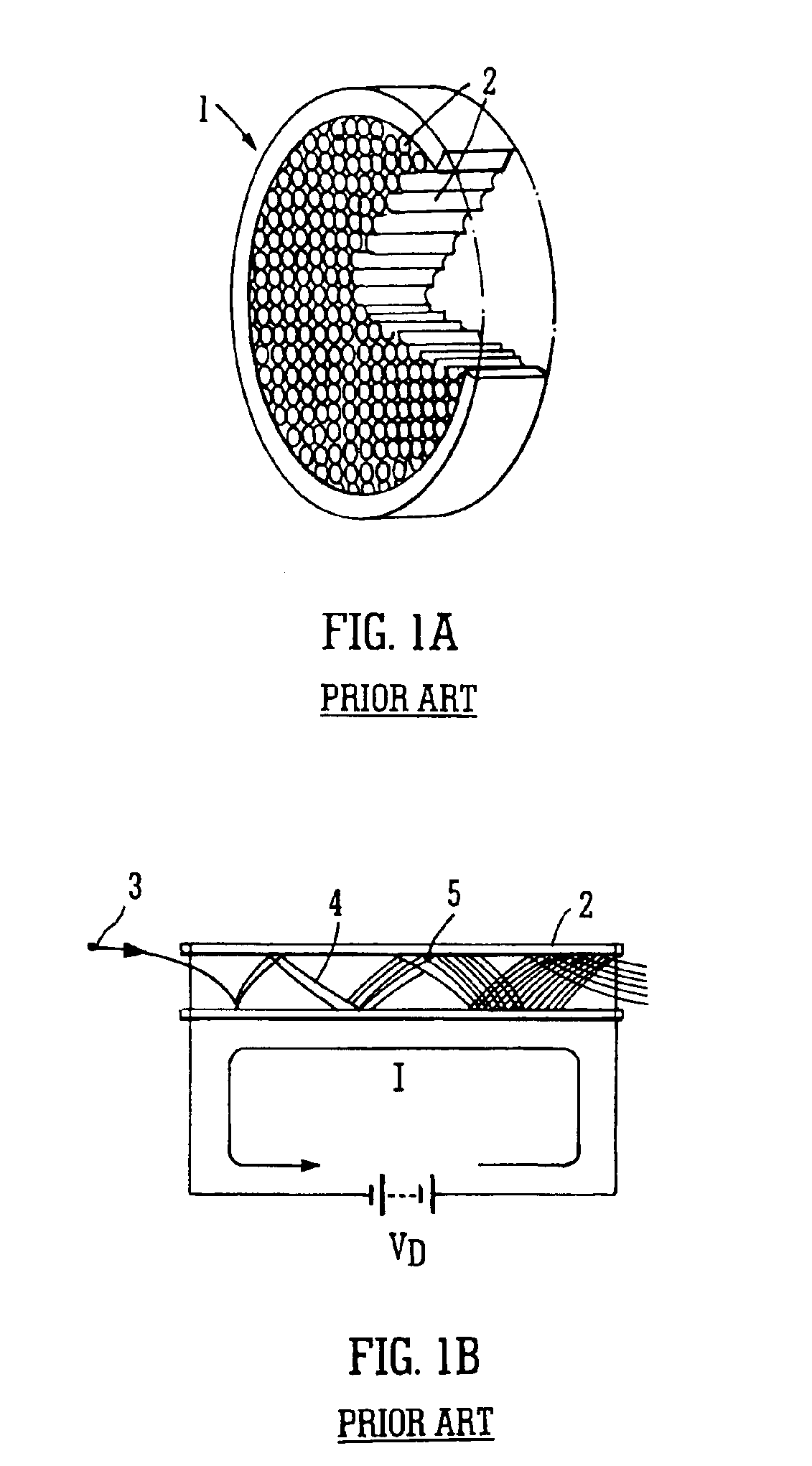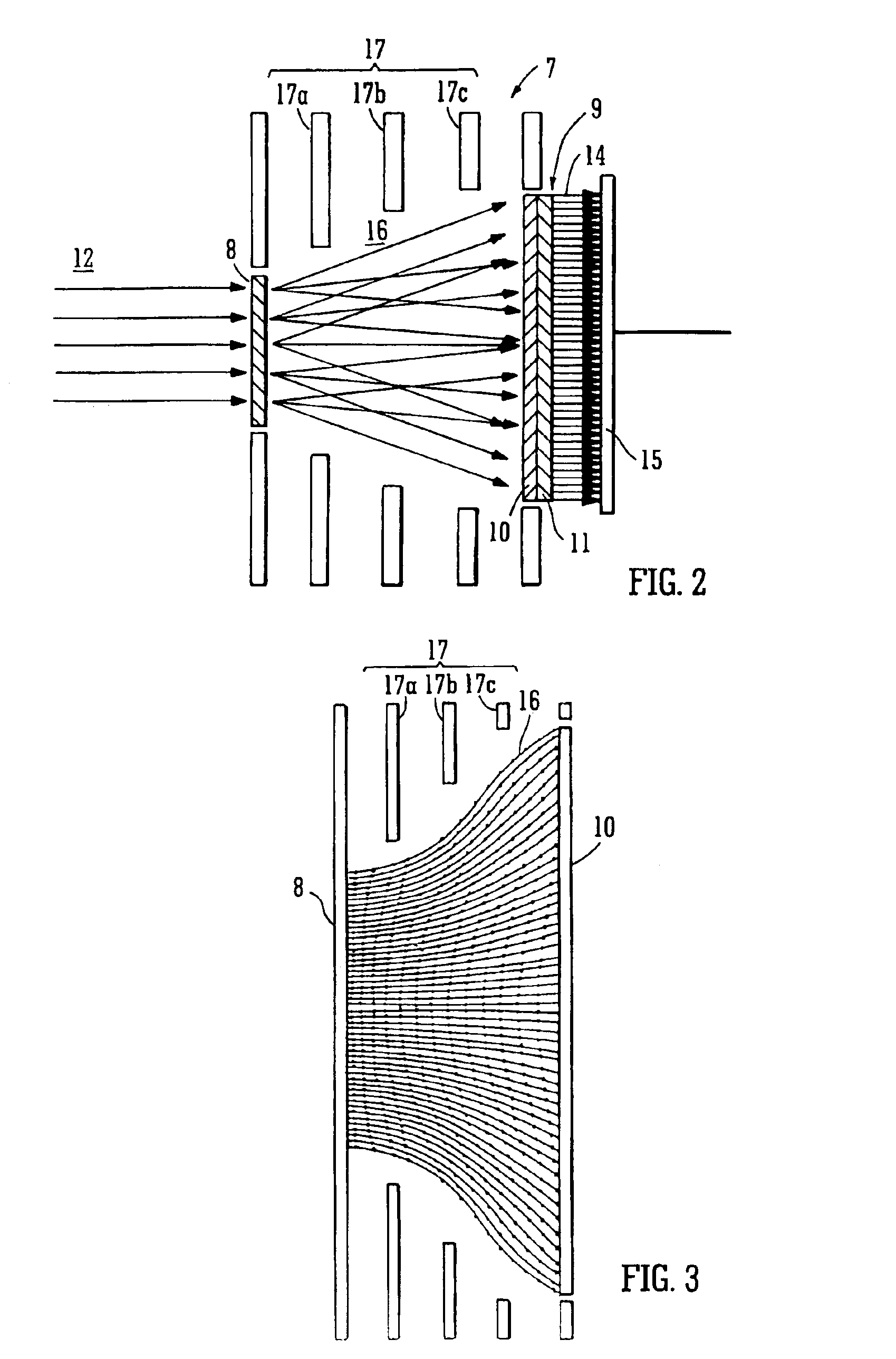Ion detector
a detector and microchannel plate technology, applied in the field of detectors, can solve the problems of inaccurate isotopic ratio determination, limited dynamic range of microchannel plate ion detectors, inaccurate mass measurement, etc., and achieve the effect of narrowing the pulse height distribution and minimizing the broadening of the pulse height distribution
- Summary
- Abstract
- Description
- Claims
- Application Information
AI Technical Summary
Benefits of technology
Problems solved by technology
Method used
Image
Examples
Embodiment Construction
[0138]A conventional microchannel plate is shown in FIG. 1A. The microchannel plate 1 comprises a periodic array of very small diameter glass capillaries or channels 2 which have been fused together and sliced into a thin plate. Microchannel plates 1 typically have several million channels 2 and each channel 2 functions as an independent electron multiplier.
[0139]FIG. 1B shows the operation of a single channel 2 of a microchannel plate 1. A single incident particle 3, e.g. an ion (or less preferably an electron or photon) enters the channel 2 and causes secondary electrons 4 to be emitted from the channel wall 5. A potential difference VD is maintained across the microchannel plate 1 which generates an electric field which acts to accelerate the secondary electrons 4 towards the output surface of the microchannel plate 1. The secondary electrons 4 travel along parabolic trajectories through the channel 2 until they strike the channel wall 5 whereupon they produce yet further seconda...
PUM
 Login to View More
Login to View More Abstract
Description
Claims
Application Information
 Login to View More
Login to View More - R&D
- Intellectual Property
- Life Sciences
- Materials
- Tech Scout
- Unparalleled Data Quality
- Higher Quality Content
- 60% Fewer Hallucinations
Browse by: Latest US Patents, China's latest patents, Technical Efficacy Thesaurus, Application Domain, Technology Topic, Popular Technical Reports.
© 2025 PatSnap. All rights reserved.Legal|Privacy policy|Modern Slavery Act Transparency Statement|Sitemap|About US| Contact US: help@patsnap.com



